Vestibular Diagnostic Technology
WWS Physical Therapy and Vestibular Rehabilitation’s clinic has a few critical pieces of technology in vestibular rehabilitation diagnosis. Appropriate and accurate diagnostic testing is important for people with dizziness and balance problems. This technology enables us to accurately diagnose patients, guide our treatment, and help people get the right answers and solutions to their dizziness. We pride ourselves in staying at the forefront of vestibular diagnostic technology better to serve our patients with the highest standard of care.
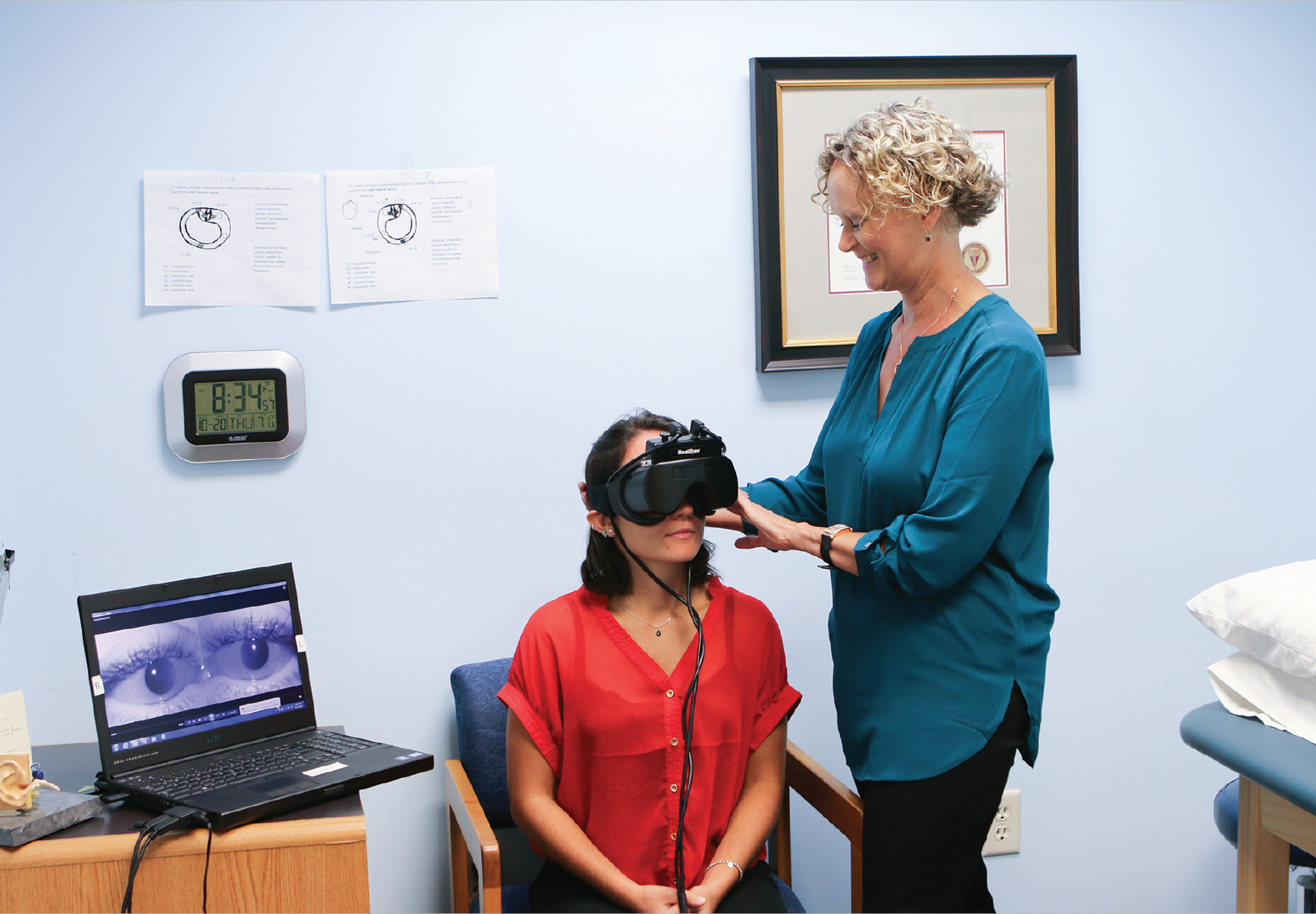
Wendy Webb Schoenewald PT, OCS, examining a patient using Micromedical infra-red goggles
Infrared Video Goggles
These are goggles that the patient wears over their eyes, much like ski or snorkeling goggles. The goggles use active infrared camera technology to show a video of the person’s eyes on a computer screen.
The infrared video goggles allow the therapist to see a patient’s eyes in better detail while the patient is in the dark which eliminates their ability to fixate their gaze on anything that might override their eye movements. In this way, the goggles reveal eye movements that wouldn’t otherwise be detected in normal room light. In positional testing for BPPV, the use of infrared goggles is critical for knowing the correct maneuver to employ and its effectiveness at repositioning the otoconia to resolve the vertigo.
This technology is useful in the diagnosis of many vestibular conditions. It can be used in differential diagnosis to visualize and record nystagmus that can be caused by vestibular neuritis, Vestibular Migraine, BPPV, Meniere’s disease, or brain related causes.
We have 4 different types of Infrared goggles that we use frequently in testing and treatment of vestibular and balance conditions which can help us adjust to unique patient needs.
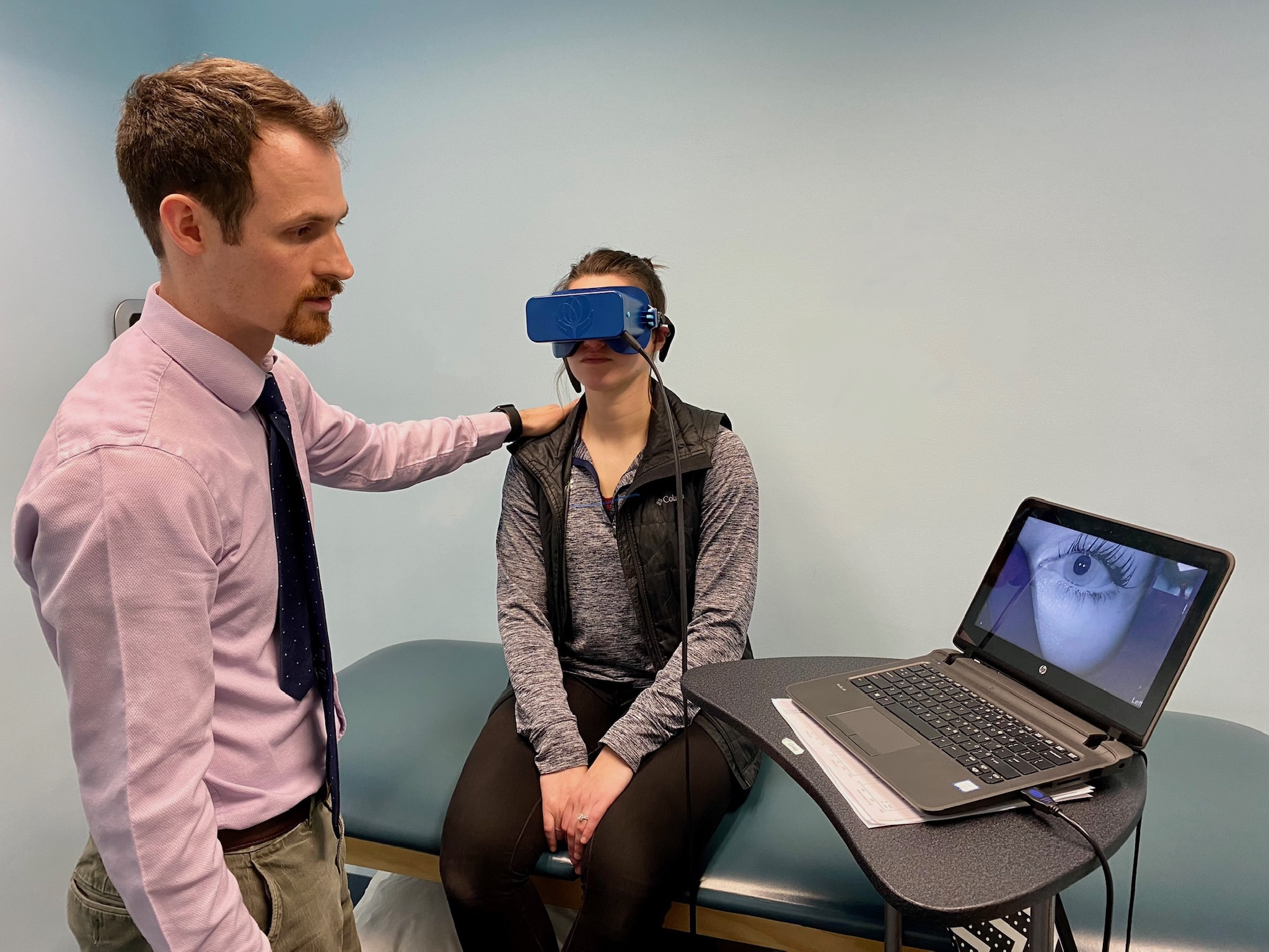
Dr. Gregory Synnestved PT, DPT using Insight Infrared Video Goggles by Vestibular First
Below is a video example of eye movements seen with infrared goggles during position testing for BPPV: Up beating, right torsional nystagmus seen in the right Dix-Hallpike position suggesting right posterior canalithiasis BPPV.
Video Head Impulse Test
The video head impulse test, also called “vHIT,” can help accurately assess the functioning of your vestibular system – the part of your inner ear that detects head movements. The results from the vHIT tell us if there is any weakness or asymmetry in function which could be a contributing factor in your dizziness and imbalance. It can also help us measure the severity of the problem, understand how you are recovering, and determine the best exercises to help you recover.
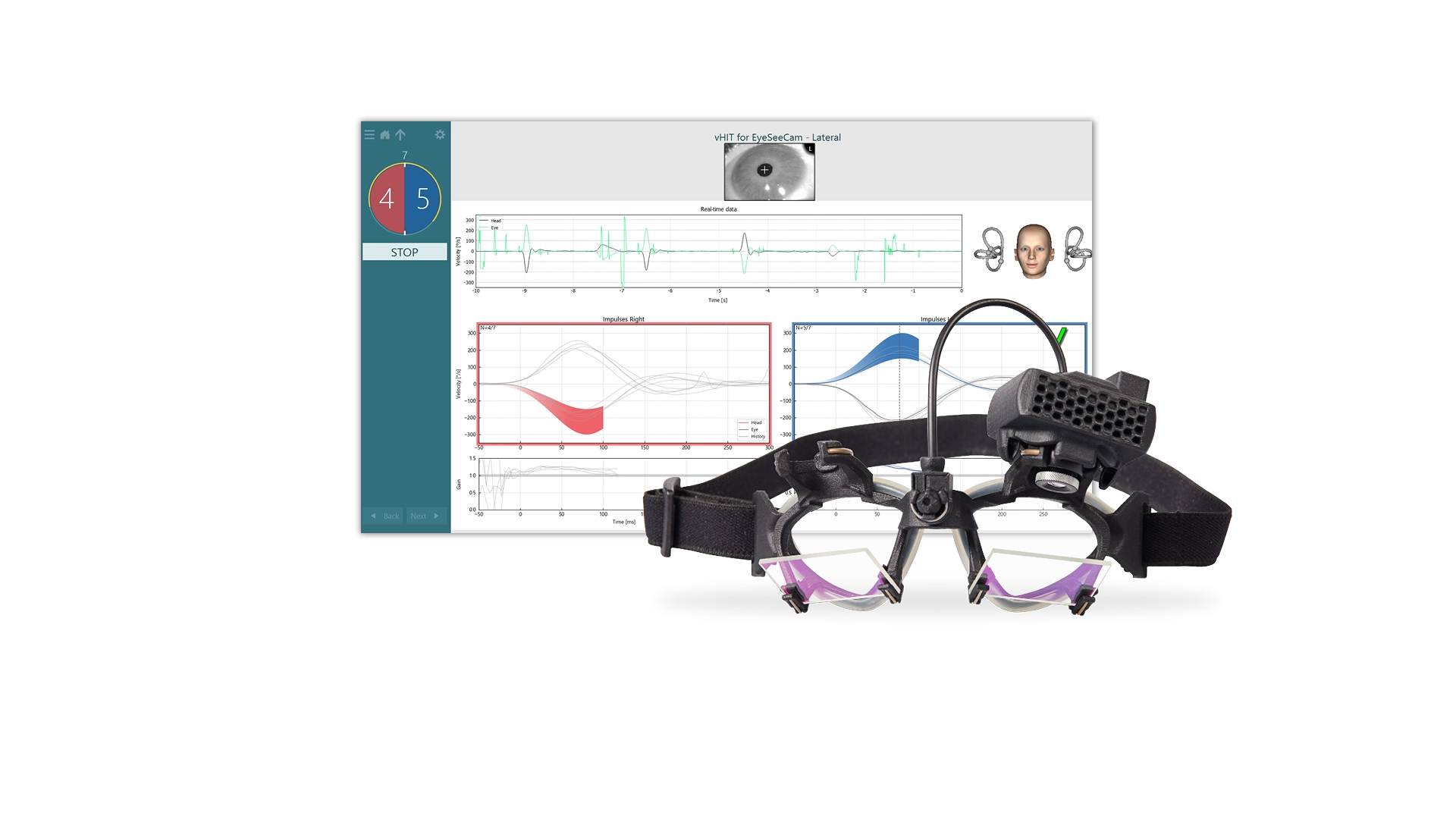
Video Head Impulse (vHIT) googles
The test has three parts, each testing a different pair of the six semicircular canals of the vestibular system. For the test, the patient is seated in a chair wearing a pair of goggles that tracks both head and eye movement. The therapist performs quick, small movements of the patient’s head while they focus their eyes on a target.
The test takes approximately 10-15 minutes to perform. We like to discuss the findings of the test with our patients after performing the test.
The physical therapist will determine if it would be a useful test to perform in finding or confirming a diagnosis. It is particularly useful in detecting weakness of the six canals of the vestibular system which can occur on one or both sides of the inner ears diagnosed as vestibular neuritis. Often, the test is performed to rule in or rule out Vestibular Hypofunction which can help guide us in a patient’s treatment plan.
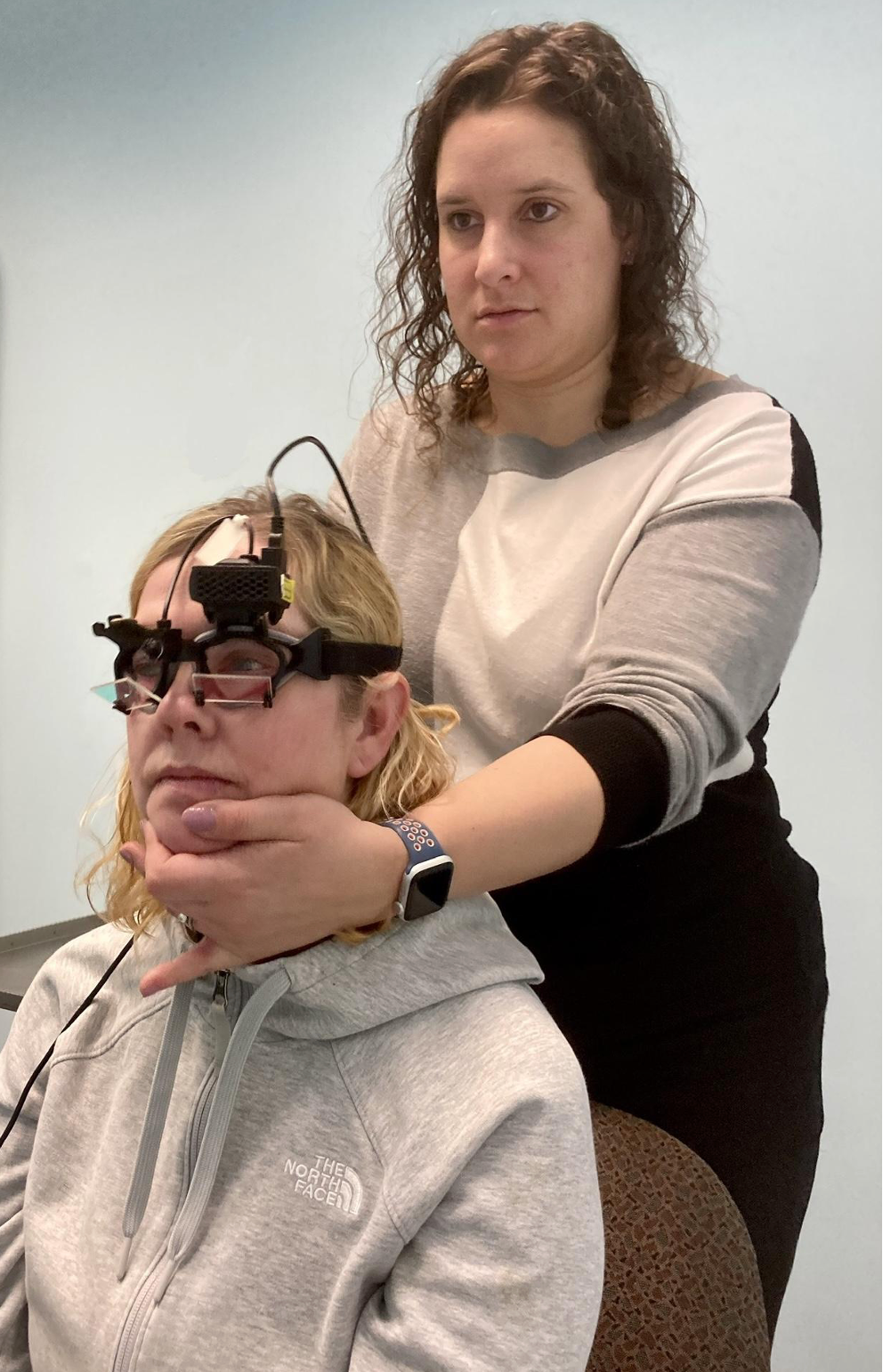
Dr. Kelsey Hanlon PT, DPT performing the video head impulse test
Dr. Gregory Synnestvedt’s demonstration video of the Video Head Impulse Test (vHIT)
How does the test detect vestibular weakness?
Normally, when we turn our head quickly, the canals of the inner ear sense the rapid movement and immediately transmit this signal to the brain. Our eyes then simultaneously move at a speed equal and opposite to the head movement, so that our eyes can stay focused on whatever we are looking at. The vHIT device can detect how well you are able to keep your eyes focused on the target while your head is being moved quickly by comparing the speed of the eyes to the speed of the head. If your eye lags behind while your head is moved, this suggests decreased input from the canal being tested. Often, if there is a deficit in canal function, the eyes must make small corrections called “corrective saccades” which can be seen in the graphic read-out from the vHIT. Changes in the timing of these saccades after therapy shows recovery of the vestibular system
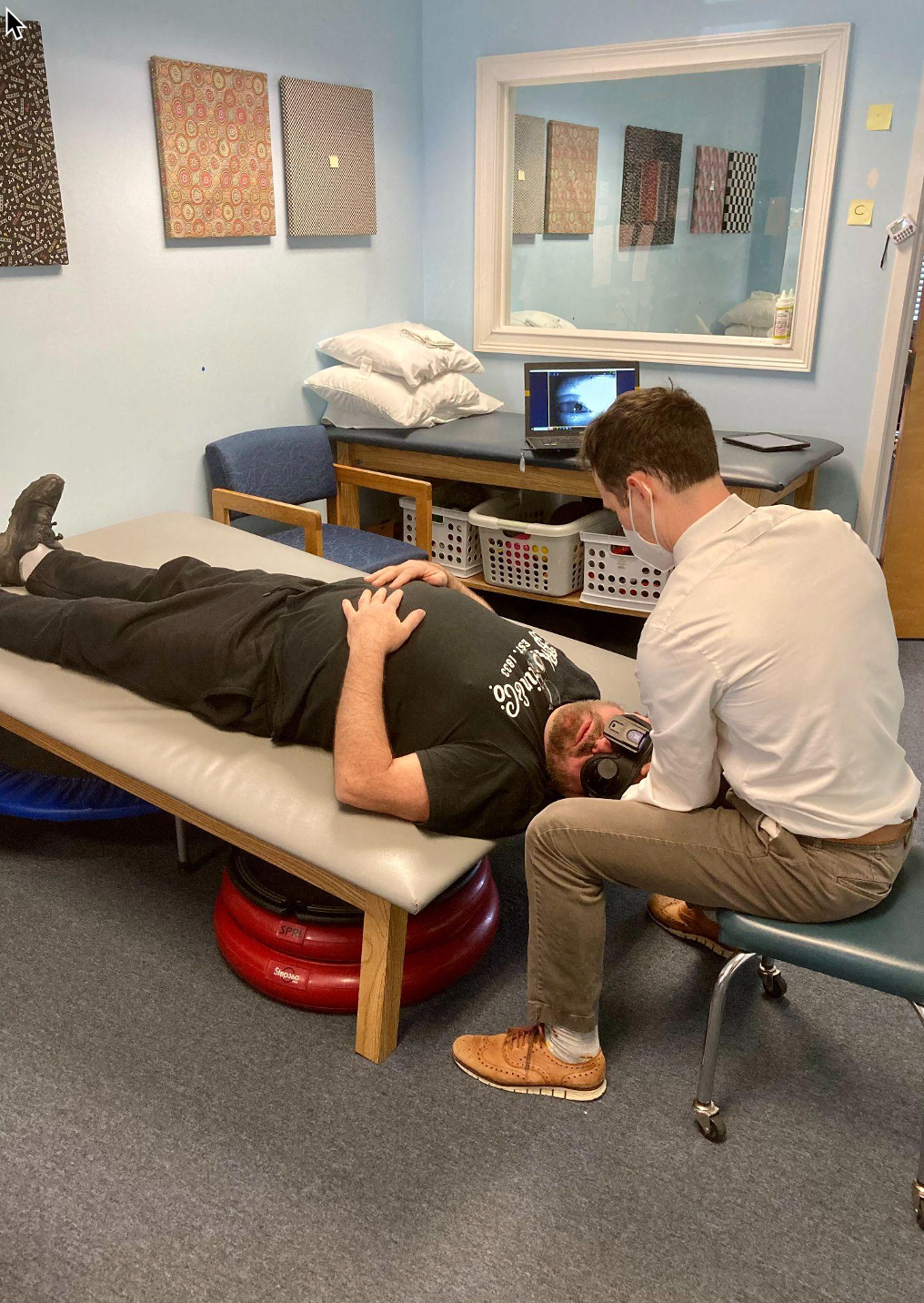
Testing a patient with BPPV on a large, low table tilted up to accommodate a patient with neck and back pain, using wireless Synapses infrared video goggles
Biodex Balance System
The Biodex is a medical machine that can be used to measure balance and control in different conditions. It also measures and trains a person’s stability limits, or how far they can move their center of mass while maintaining balance. The patient stands on the Biodex force plate which allows the computer to gather information about a patient’s balance, while a screen provides visual feedback and grades their performance. This machine quantifies the amount of sway during static and dynamic standing balance tests and track progress over time. We also use it in training, since it gives patients good visual and tactile feedback about their postural control and reactive balance movements.
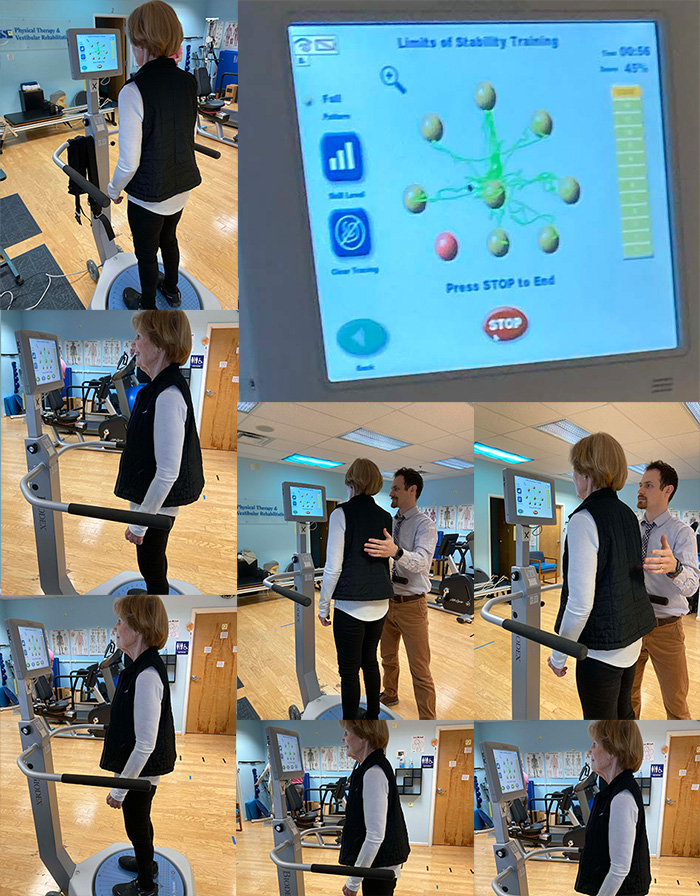
Testing a patient with the Biodex machine to measure balance and control.
We pride ourselves on staying at the forefront of vestibular diagnostic technology to better serve our patients with the highest standard of care.
Wendy Webb Schoenewald PT, OCS
Dr. Gregory Synnestvedt PT, DPT
WWS Physical Therapy and Vestibular Rehabilitation
Doylestown, PA.
@wwspt.com
(215) 489-3234
